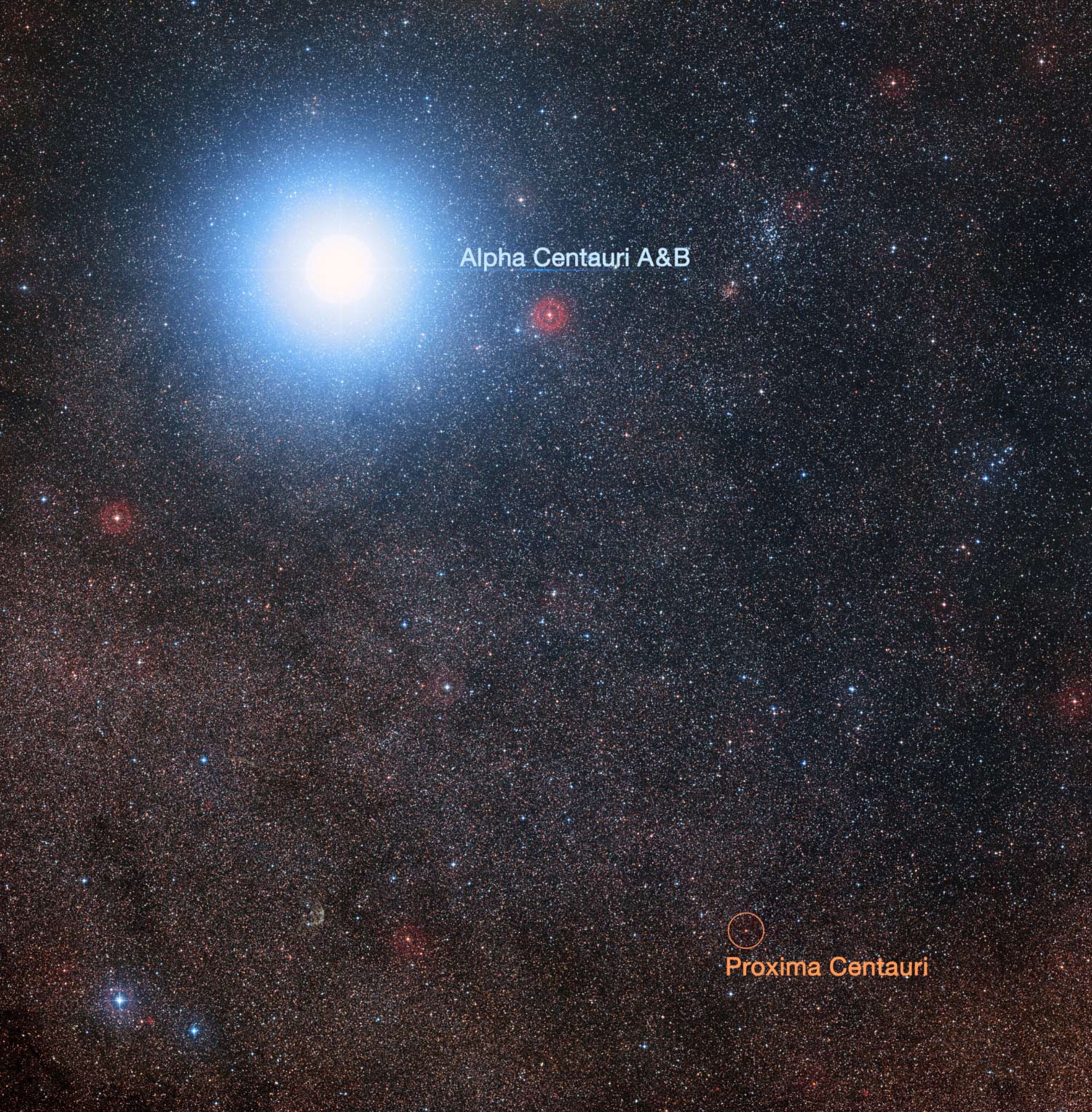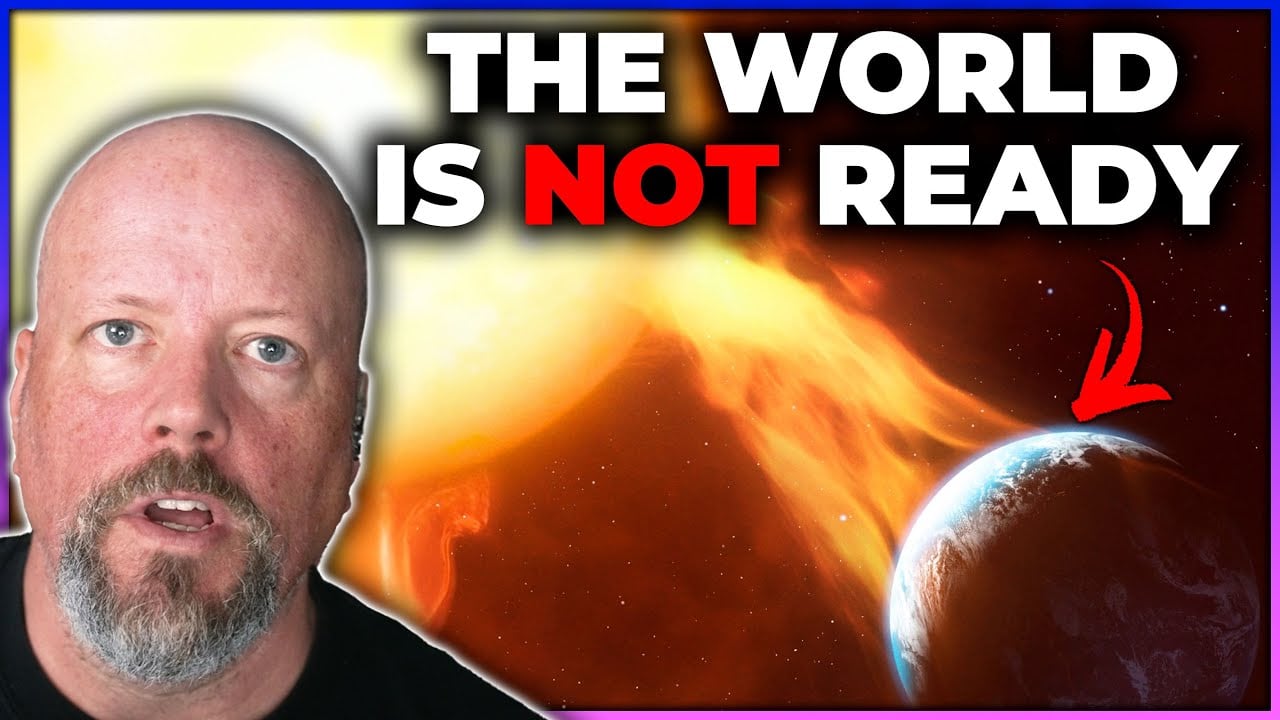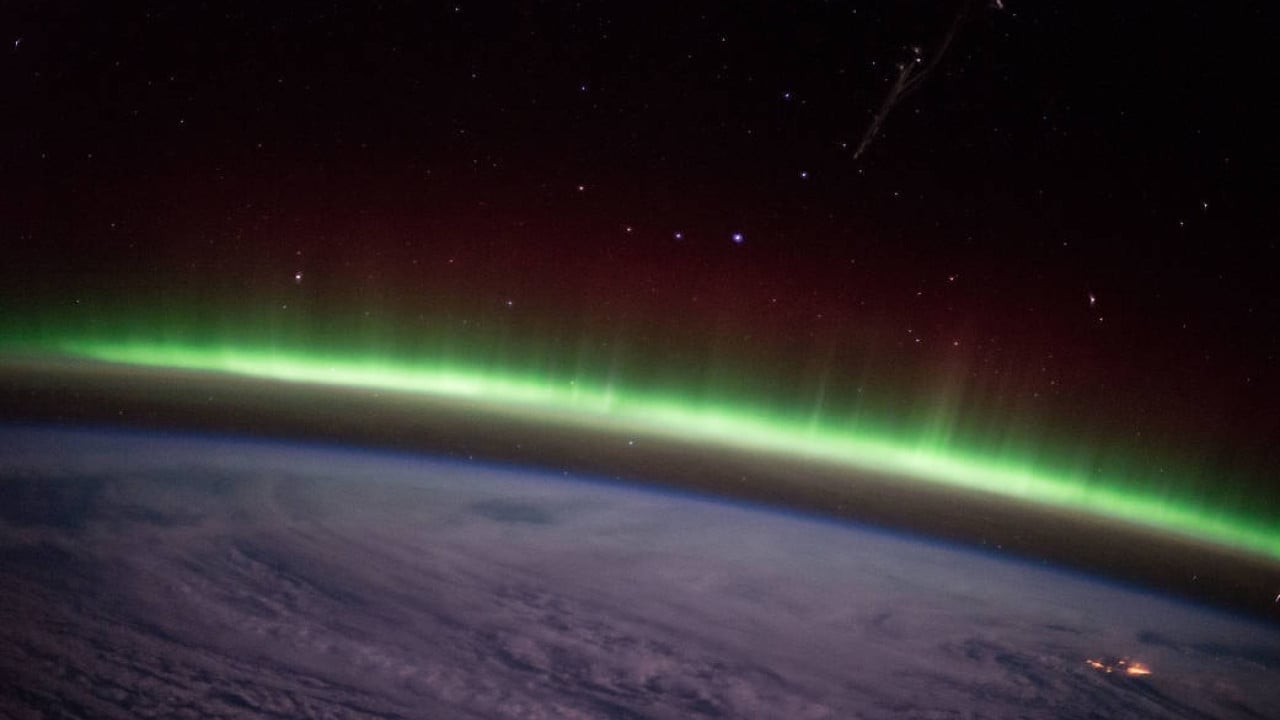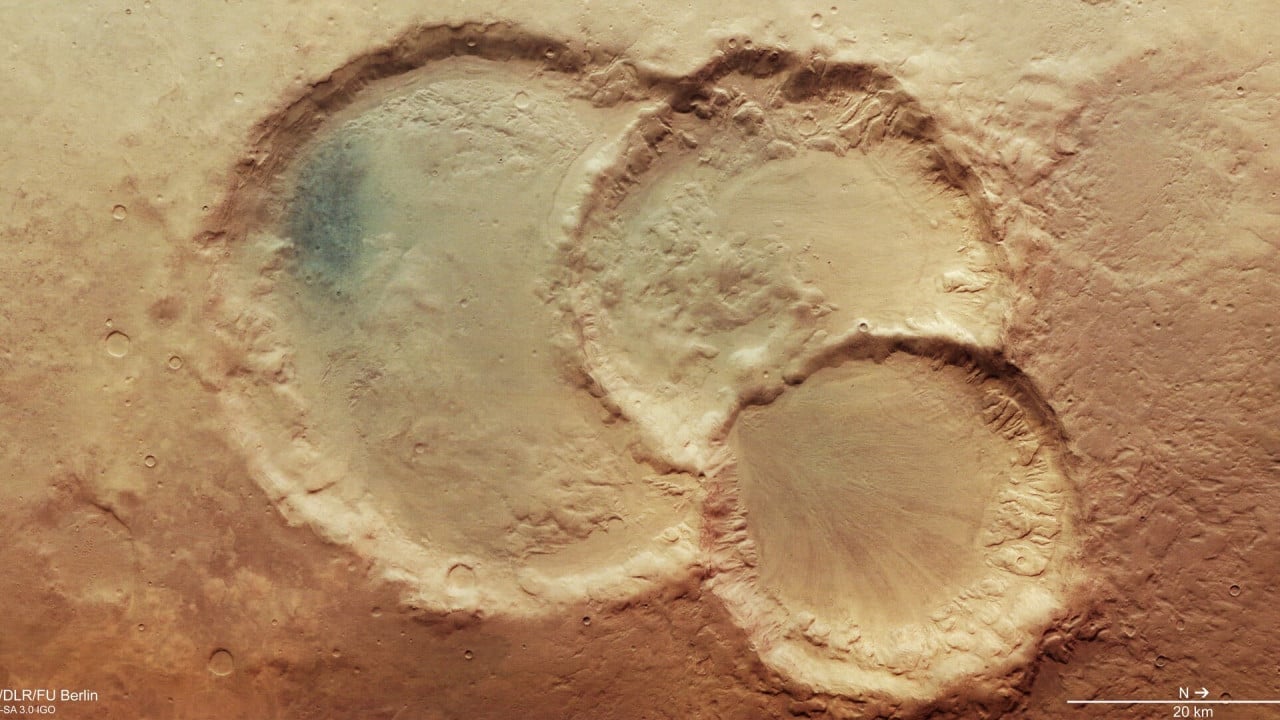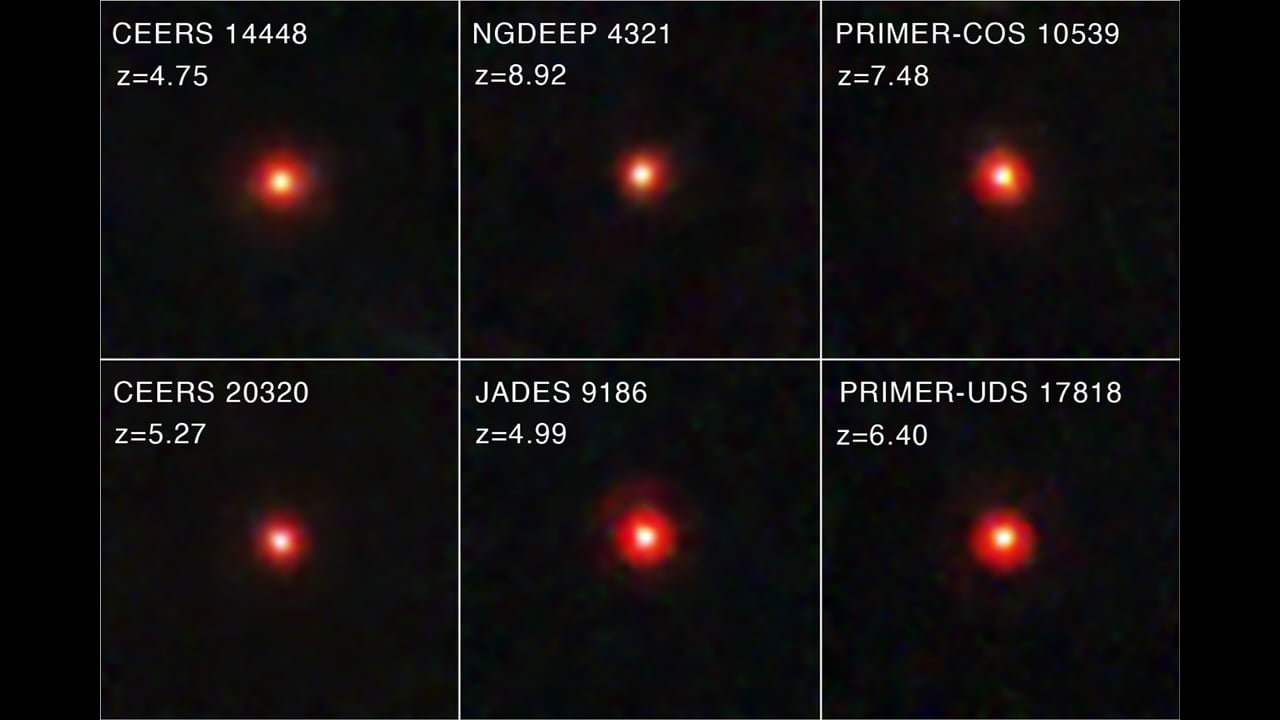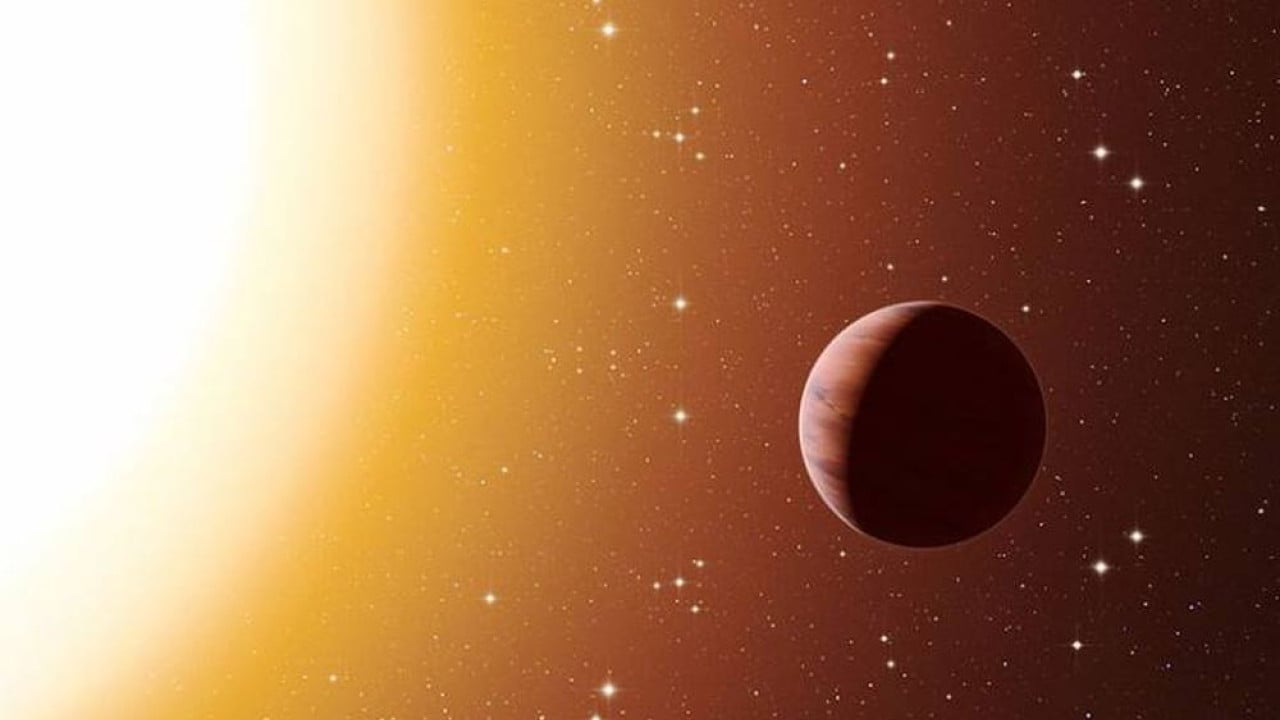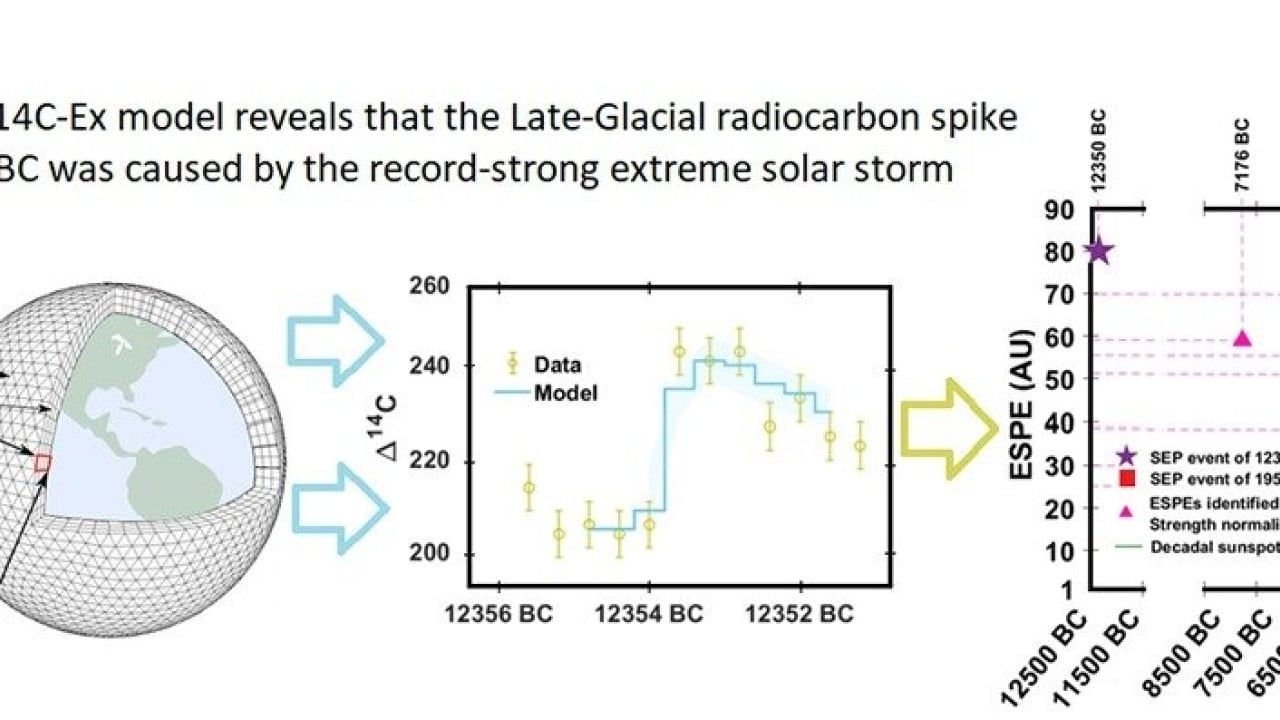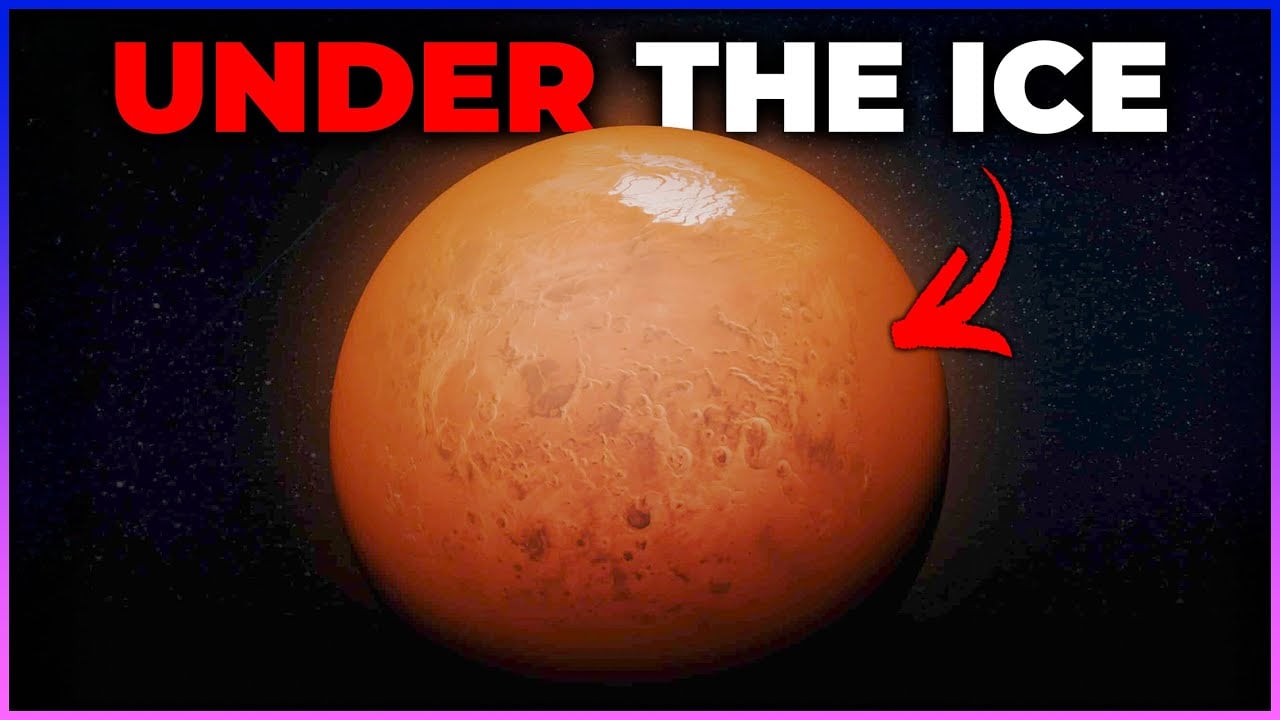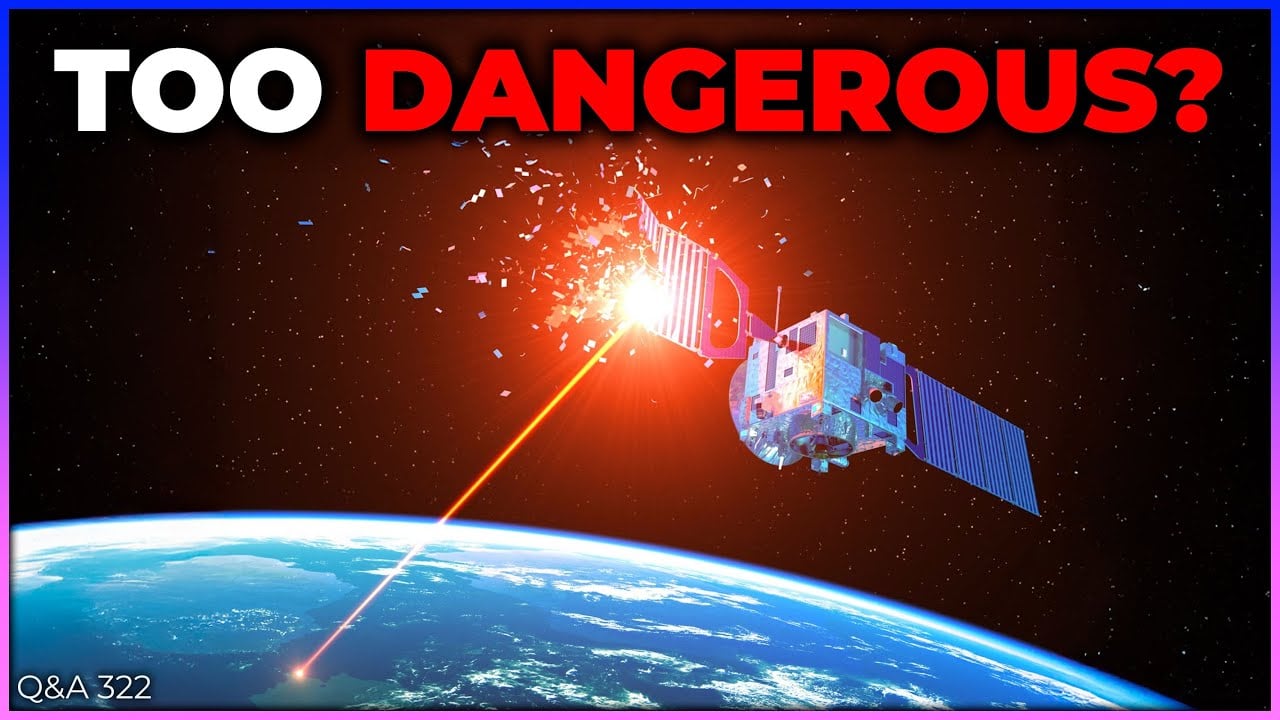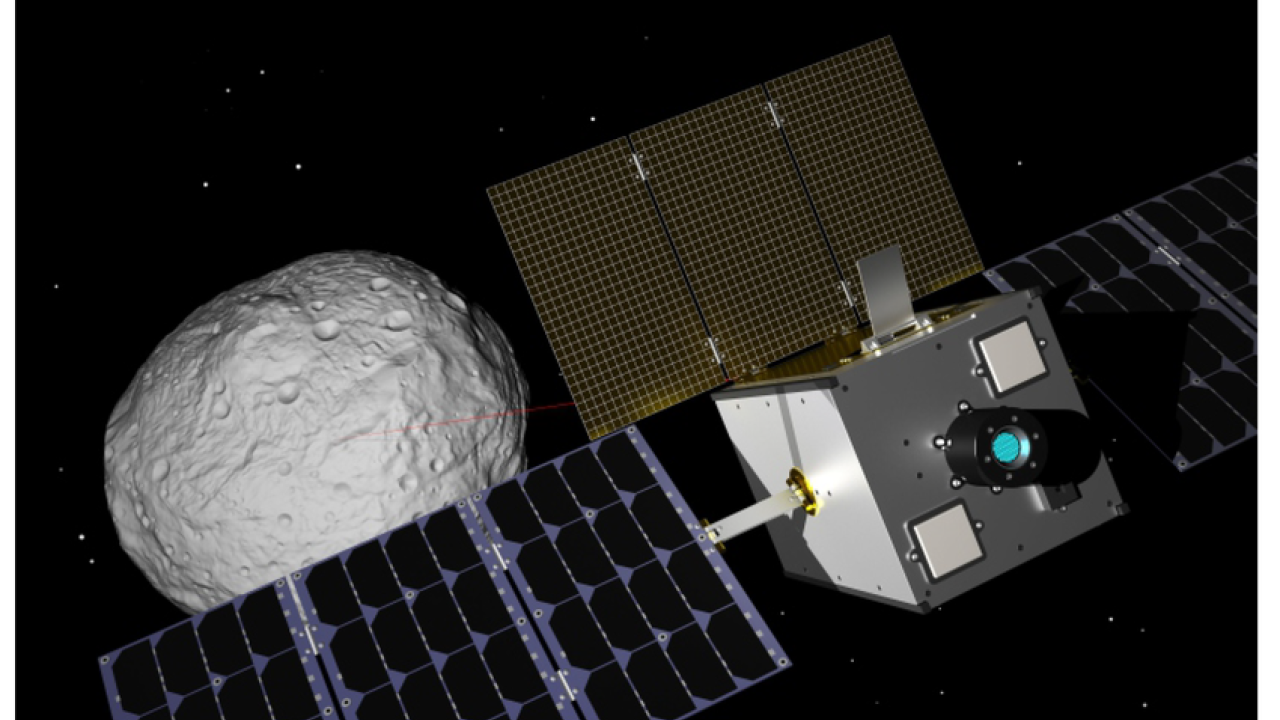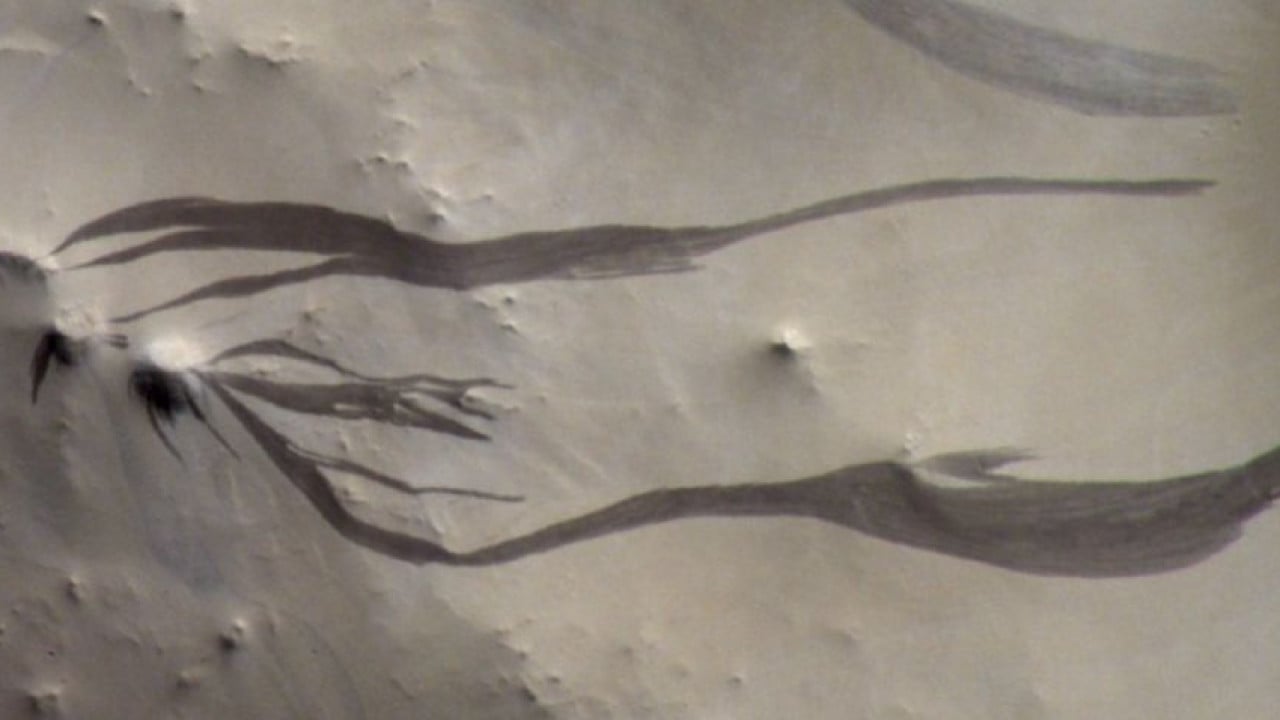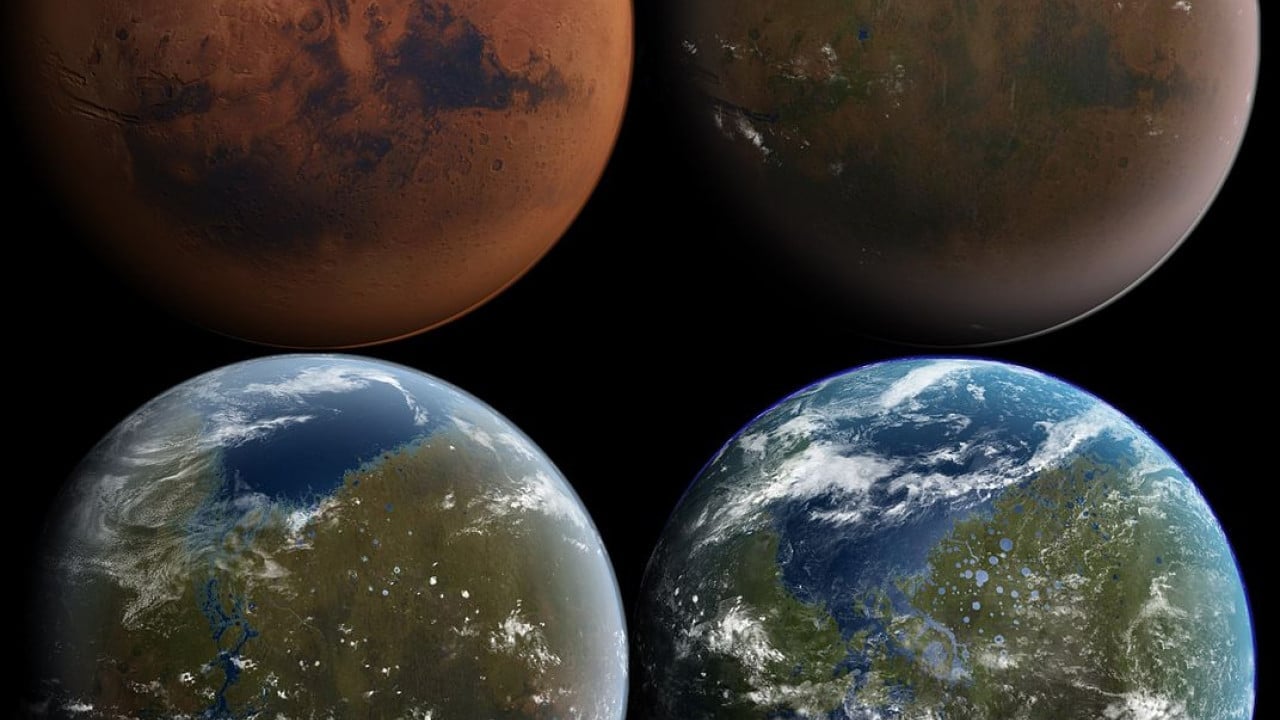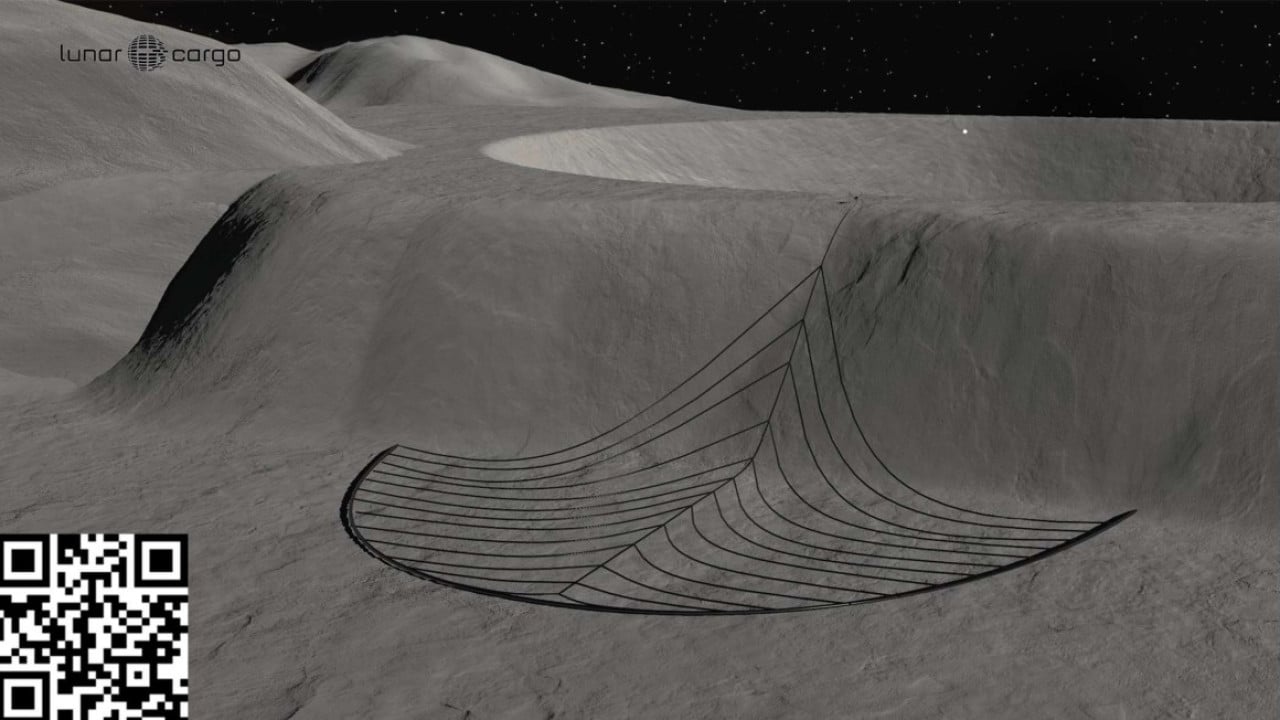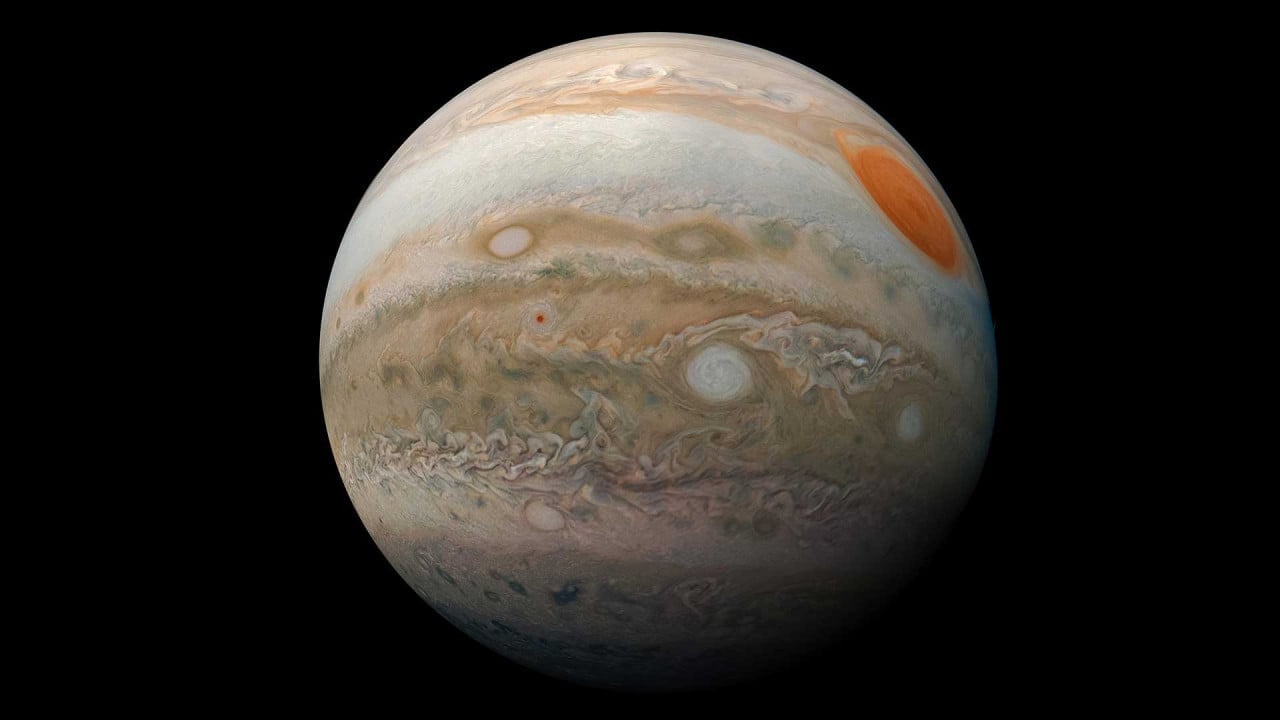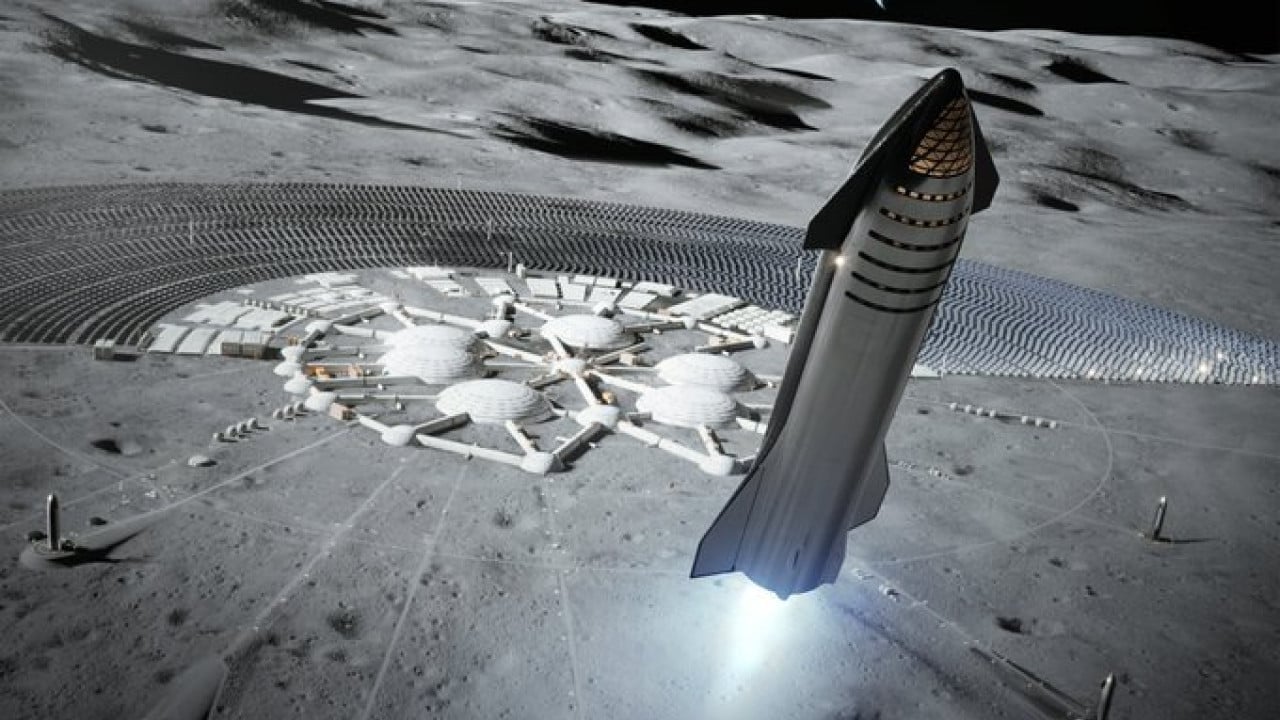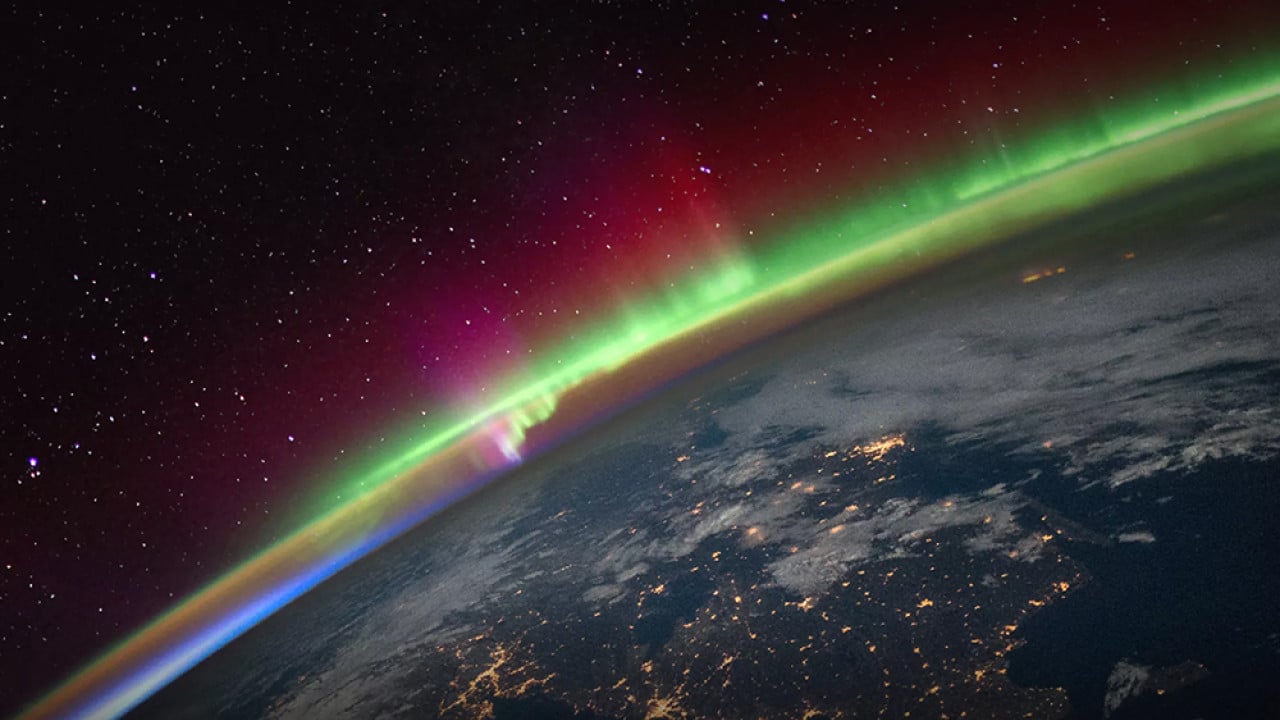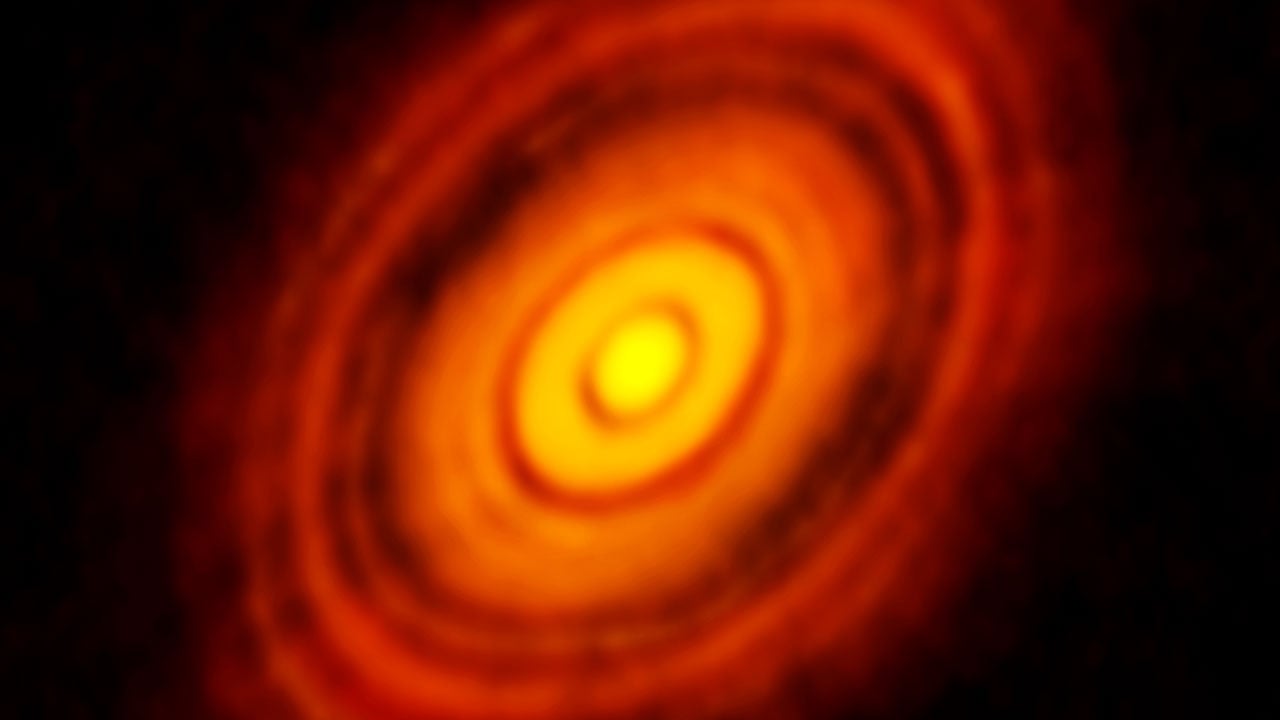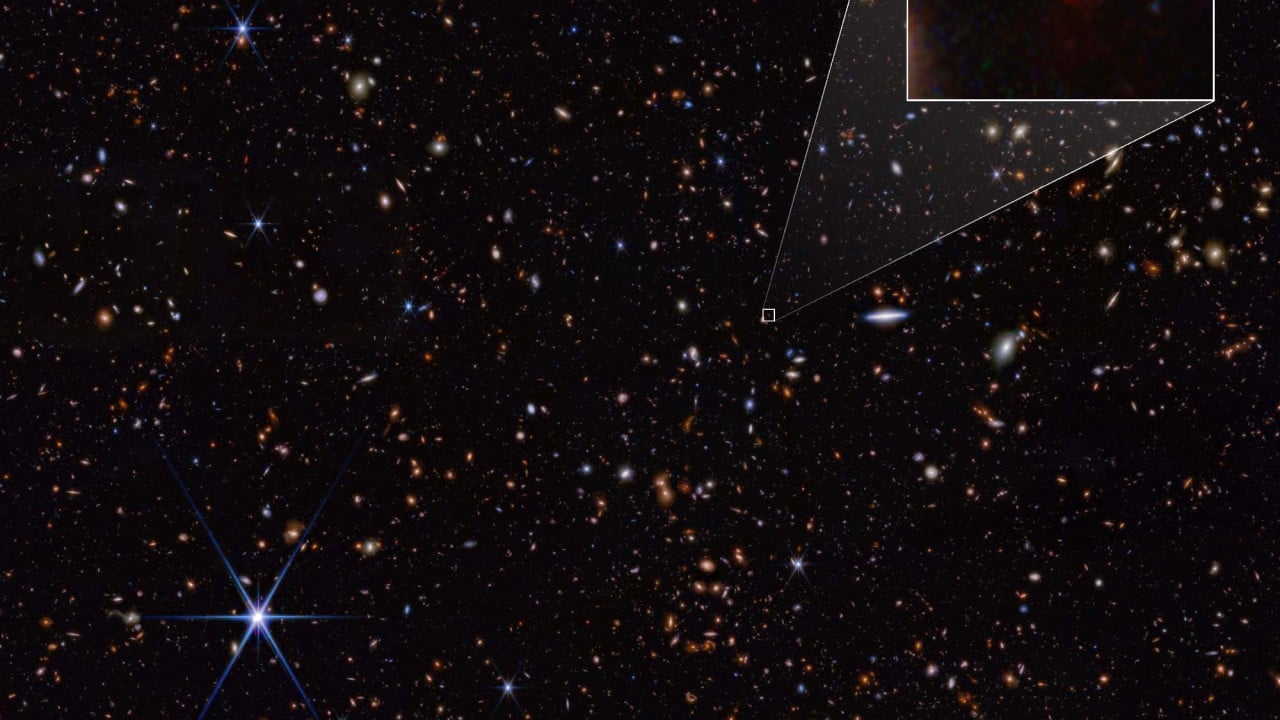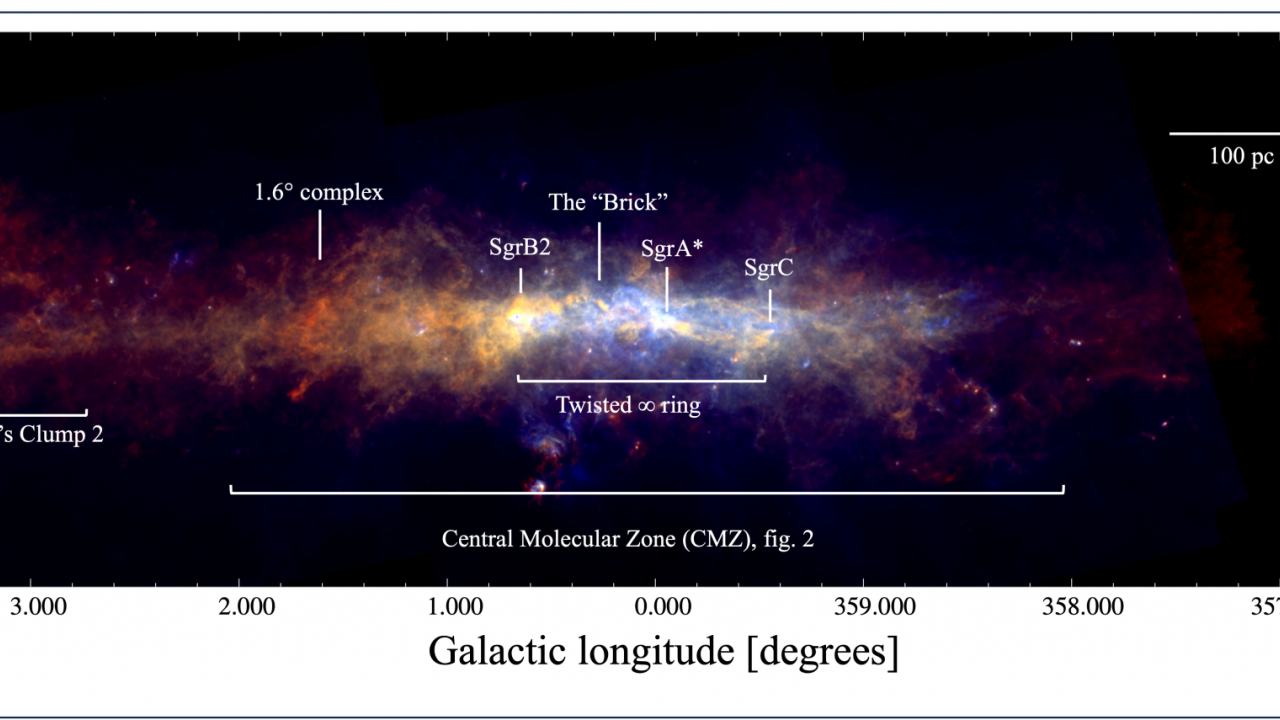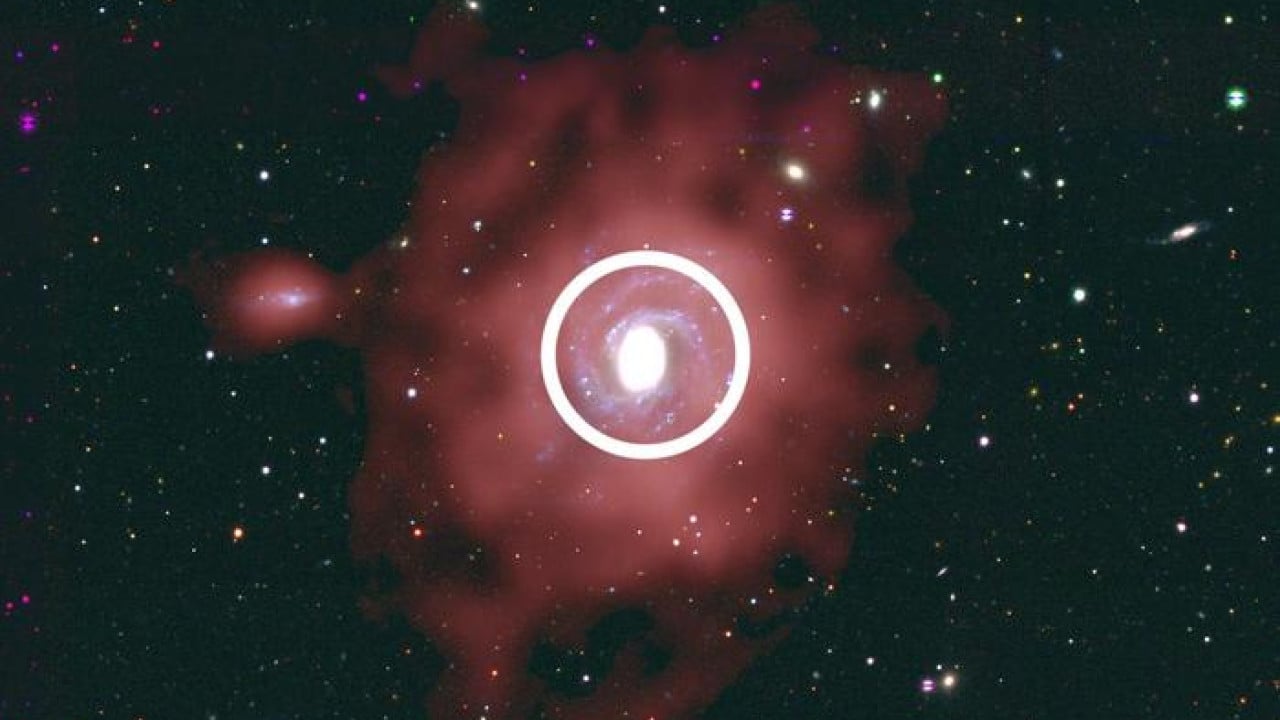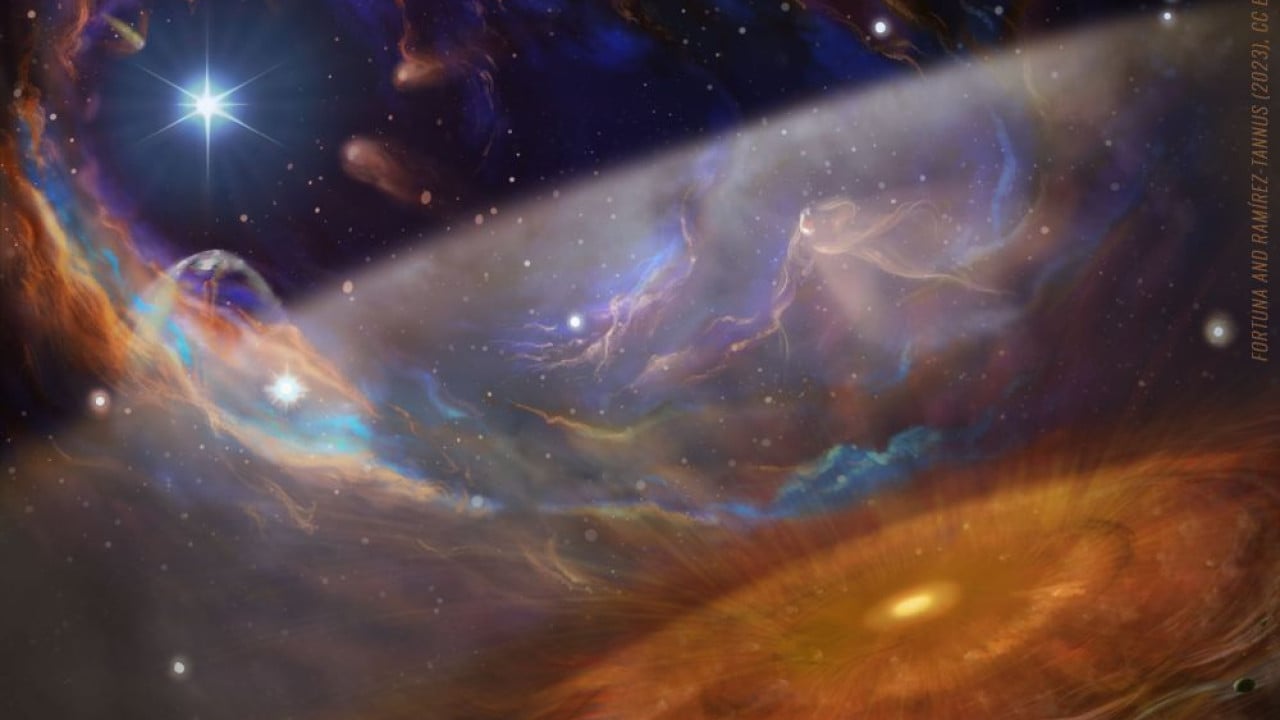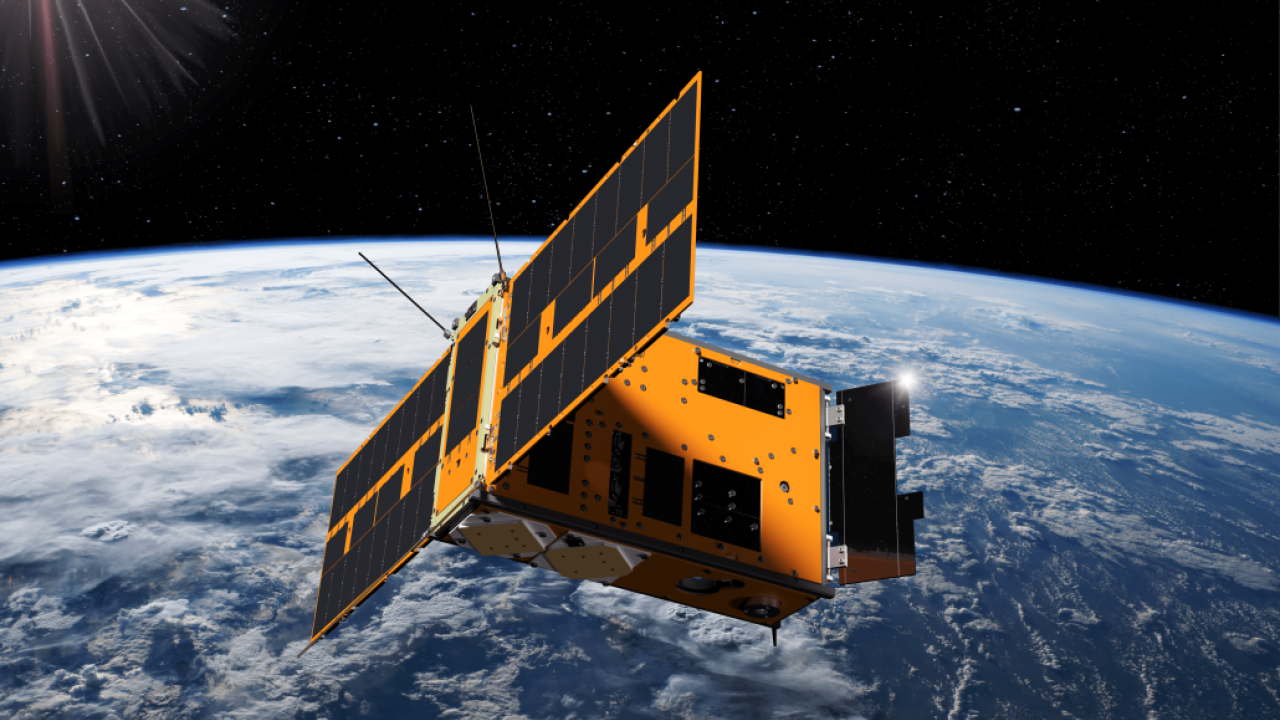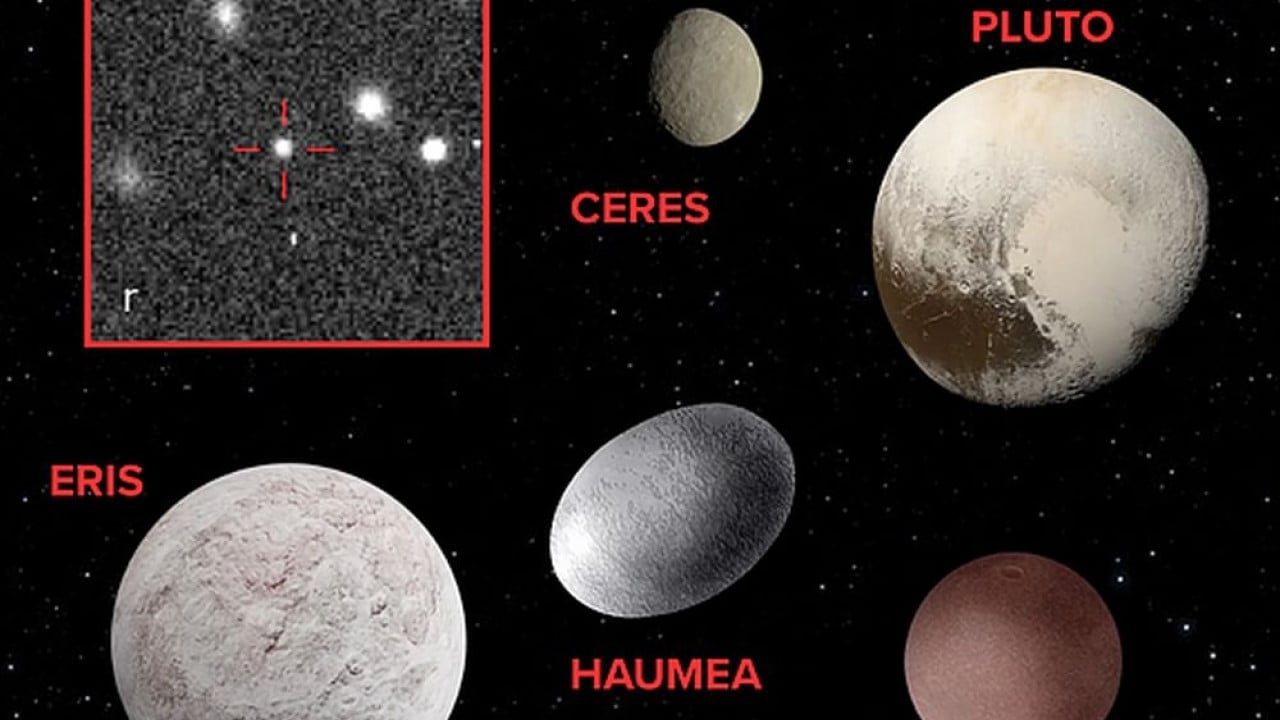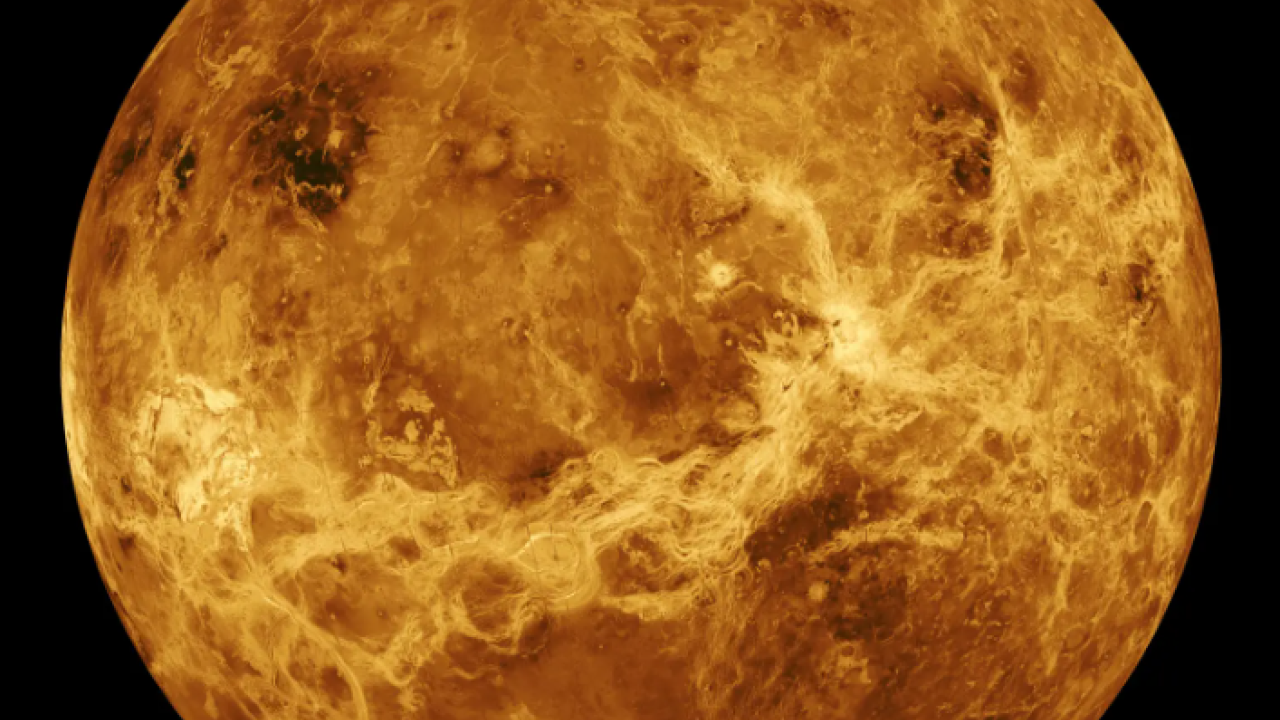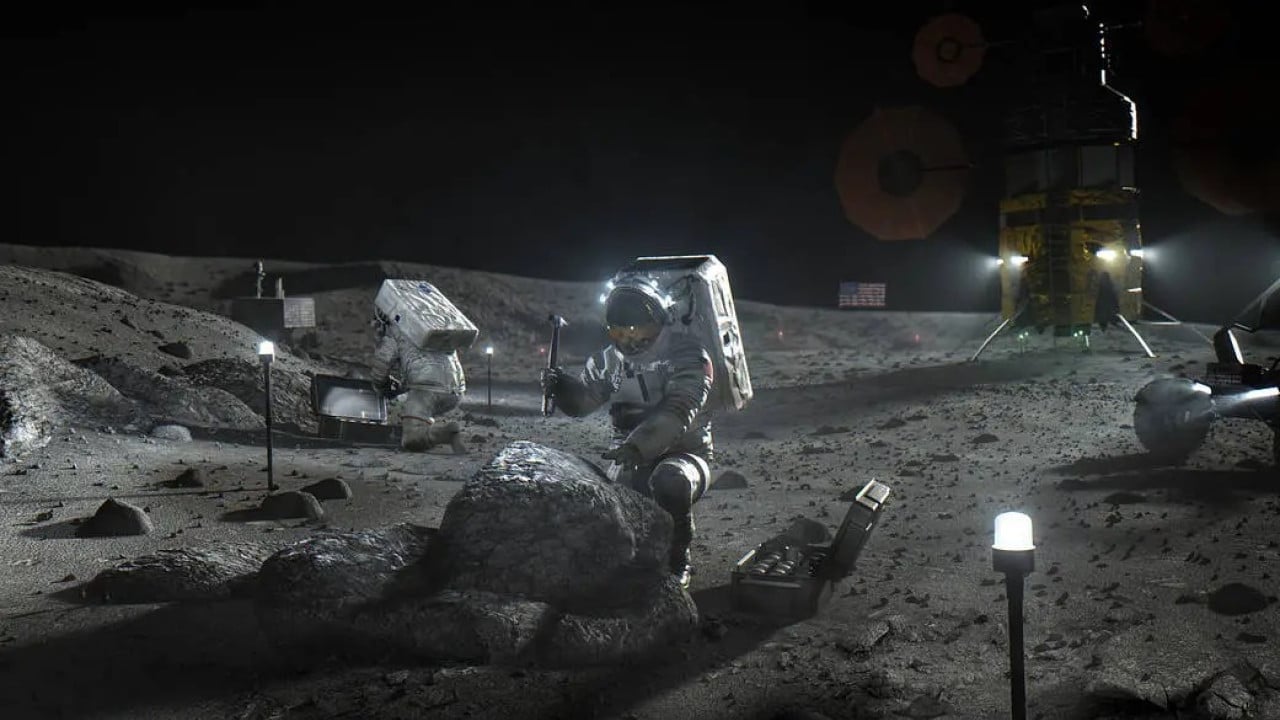Astronomers Conduct a Preliminary Search for Exoplanets Around Alpha Centauri
We know of planets at the closest star to the Sun, Proxima Centauri, but that's a red dwarf star. What about the larger, more sun-like binary stars at Alpha Centauri? Astronomers have begun searching for planets at Alpha Centauri using JWST and claim to have found a Jupiter-sized planet and a bright zodiacal dust disk around it. Webb studied the stars 3 times in the last year, and the astronomers say there's a signal of a Jupiter-sized planet at 1.5 to 2 AU from α Cen A.
Read the full story by Matthew Williams
🦄 If you enjoy what we do at Universe Today, join our Patreon Club! Here are just some of the perks you can get by subscribing:
- I’ll remove all ads on UniverseToday.com for life, even if you unsubscribe in future
- You’ll get ad-free versions of our videos, so you won’t even have YouTube ads
- Early access to interviews, which we now do in improved quality
- A secret Patreon Email Newsletter
- Access to Patreon-only AMA session once per month
- Behind the scenes and other bonus content
- Help us stay independent and support the team directly
Support Universe Today. Join the Club Now!
Dangers of A Super Solar Storm // Jupiter Twice The Size // Crazy Moon Landing System
Jupiter could have been twice as big in the past, the challenges of landing on the Moon, the record for the farthest galaxy has been broken. And in our Patreon edition, how the location of gas plays a role in star formation.
🎧 Subscribe to our podcasts:
- Universe Today Podcast. Space news, interviews, Q&As, and exclusive content from Universe Today.
- Astronomy Cast. Your weekly facts-based journey through the cosmos, which I co-host with astronomer Dr. Pamela Gay.
Upcoming Shows:
Astronauts Could See Auroras on Mars With Their Eyes
Earth's magnetosphere channels particles from solar storms into stunning auroras. Mars lacks a planet-wide magnetic field and has patchy auroras barely detectable with instruments. Or so we thought. New images captured by NASA's Perseverance Rover with its Mastcam-Z instrument show green auroras in visible light. When humans finally walk on Mars and look to the skies, they could possibly see faint auroras there, too.
Read the full story by Matthew Williams
Meteor Impacts on Mars Can Excavate its Secrets
Spacecraft orbiting Mars can reveal small features on the planet's surface, but there are only so many things you can see from above. When a meteor strikes the surface of Mars, it can excavate sub-surface material, allowing scientists to study what lies beneath. Researchers have simulated various impacts on Mars, changing the sub-surface material from bedrock to water-ice glaciers, and then calculated what should be visible after an impact, enabling new science.
Read the full story by Matthew Williams
Little Red Dots Aren't Hiding Super-Powered Black Holes
Little red dots were one of JWST's discoveries, compact galaxies seen near the beginning of time that seem to contain supermassive black holes with tens of millions of solar masses. How did they get so massive so quickly? Astronomers proposed that they could be accreting mass beyond the "Eddington limit," which should be a hard limit on black hole growth. A new paper fails to observe X-rays from super-Eddington accretion, overturning this theory.
Read the full story by arxiv.org
Exoplanet's Companion Found Via Orbital Mechanics Variations
An exoplanet has been discovered with a bizarre orbital period. Instead of orbiting around its star with clocklike precision, HAT-P-12 can be a few minutes ahead or behind schedule with each orbit. This means there's another, hidden companion in the system, interacting with the planet through its gravity. By watching these transit variations, astronomers were able to calculate that it's a planet that orbits every 6.24 days and has about 2% the mass of Jupiter.
Read the full story by Andy Tomaswick
New Algorithm Details the Most Extreme Particle Storm Known to Science
The most powerful solar storms on record happened 12,350 years ago, releasing a stream of particles that struck the Earth's atmosphere and generated carbon-14 atoms. This occurred when the Earth was in the Late Glacial period, at the end of the last Ice Age. The Earth had a weaker geomagnetic shield at the time, allowing more particles to enter the atmosphere. In spite of the weaker magnetosphere, the storm was still objectively stronger than anything seen since.
Read the full story by Andy Tomaswick
How Liquid Water Can Hide on Mars
So far, we haven't found liquid water on Mars. But there are still places where it can hide from us. One of them is pockets under the ice. How can it exist there, and what are the possible ways we have to detect it? Finding out in this interview.
Lasers VS Space Junk, Missions Overdelivering, Asteroids Already Mined | Q&A 322
Which space mission would I save from cancellation if I could? Is fighting space junk with lasers a good idea or not? What if we find asteroids that have already been mined? And in our Q&A+ on Patreon, how do we measure the masses of black holes? Answering all these questions and more in this Q&A show.
A CubeSat Propulsion System to Visit Near Earth Objects
Astronomers know of tens of thousands of asteroids, each of which is scientifically fascinating. We could never send flagship missions to even a tiny fraction, so engineers are proposing that CubeSat missions could be equipped to make the journey. One key challenge is propulsion, allowing a tiny spacecraft to have enough propellant on board that it could catch up with an asteroid. A new paper proposes how tiny ion engines could be installed on CubeSats.
Read the full story by Andy Tomaswick
Planetary Scientists Confirm There's No Flowing Water on Mars
Remember when astronomers found dark streaks in craters on Mars? It was hoped that these were caused by liquid water erupting out of the side of craters and spilling downstream, darkening the soil. Now, researchers are pretty sure liquid plays no part in their formation. They created a database of 500,000 of these features, observing light and dark streaks and how they lighten over time, and were able to rule out a liquid cause.
Read the full story by Evan Gough
Terraforming Mars Could Be Within Reach
Mars is the Solar System's habitable zone, and it could, in theory, support life. But it lacks a global magnetic field and lost most of its surface water long ago. In a new paper, researchers suggest that transforming Mars into a habitable world is an achievable goal and suggest there be more research into terraforming Mars. They propose several methods for warming Mars, releasing pioneer species to build an ecosystem, and improving its atmosphere.
Read the full story by Mark Thompson
Building A Giant Catchers' Mitt On The Moon
Any planet with an atmosphere allows us to use air resistance to slow down a spacecraft's velocity. But what about an airless world like the Moon? A team of engineers has proposed a giant catcher's mitt called MACEDONAS that could receive cargo deliveries from an orbiting mother ship. The capture system would slow down the object's velocity without destroying it, so payloads can be delivered to the lunar surface without propellant.
Read the full story by Andy Tomaswick
New Study Suggests That Jupiter was Once Twice as Big as it is Today
Jupiter is the largest planet in the Solar System, but astronomers calculate that it was once much bigger, maybe twice the size that it is today. They made this discovery by analyzing the orbits of two of its innermost moons, Amalthea and Thebe. They have slightly tilted orbits and small orbital discrepancies that allowed researchers to calculate its original size. It once had a volume of 2,000 Earths, roughly twice its current volume of 1,321 Earths.
Read the full story by Matthew Williams
Lunar Landing Pads Will Need to be Tough
If many spacecraft are traveling to the Moon, their exhaust plumes will kick up debris that could go into lunar orbit and cause a hazard to other spacecraft. The solution will be to build landing pads on the lunar surface out of local regolith. Researchers simulated landing pads made out of sintered regolith, which could handle the heat and force of the propellant exhaust from a landing spacecraft. They found techniques that will minimize erosion over multiple landings.
Read the full story by Mark Thompson
Is Mars Storing its Water Underground?
Mars is dry today, but once had seas and rivers on its surface. Where did the water go? Some believe it was blown off into space by the solar wind, but others think it percolated from the surface into underground aquifers and could still be there today. On Earth, water goes from the surface to aquifers in just a few days, but researchers found that it could take anywhere from 50 to 200 years to get a couple of kilometers under the surface.
Read the full story by Evan Gough
Is the World Ready for a Catastrophic Solar Storm?
In May 2024, dozens of US departments and agencies ran a tabletop exercise to predict what would happen to the US if a powerful solar storm hit the Earth, disrupting the electrical grid, communications, and other infrastructure. They found that there was a need for better coordination during these events, from early space weather notifications to better communication with the public. Ironically, the exercise happened as the most powerful storm in decades struck Earth.
Read the full story by Carolyn Collins Petersen
New Exoplanet Can Cause Chemical Discrepancies In Paired Stars
Co-paired stars are stellar objects that move together and probably formed in the same stellar nebula. Astronomers have examined the chemical composition of various stellar pairs to see if any differences could be explained if one formed a planet or if it ate one. They examined 125 co-moving star pairs and showed that they had differences in elements and magnetic activity, leading to the suggestion that planet formation could lead to the discrepancy.
Read the full story by Andy Tomaswick
The New, Farthest Galaxy has Been Found by Webb. Only 280 Million Years After the Big Bang
JWST has done it again, finding the most distant galaxy ever seen. Designated MoM-z14, it was detected at a redshift of 14.44, which corresponds to 280 million years after the Big Bang. Astronomers used several techniques to confirm that it is actually at this distance, confirming the redshift with Webb's NIRSpec/prism spectroscopy. The galaxy shows rising star formation and a chemical signature reminiscent of globular clusters and ancient Milky Way stars.
Read the full story by Evan Gough
Mapping the Center of the Milky Way in 3D
The Solar System is about 26,000 light-years away from the center of the Milky Way, a region that's shrouded in gas and dust, containing an active region called the Central Molecular Zone. Researchers have developed a 3D model of the CMZ, compiling a list of structures in the region, such as molecular clouds and even smaller objects that could be newly forming stars. They used a combination of radio telescopes and infrared observatories to create this comprehensive map.
Read the full story by Mark Thompson
The Location of a Galaxy's Gas Plays a Role in Star Formation
Some galaxies are rapidly forming stars, while others are quieter. Of course, the amount of gas and dust in a galaxy matters, but according to a new paper, it's the location of the material that also plays a role. Astronomers mapped the gas distribution in about 1,000 galaxies as part of a huge survey and found that the ones with the most star formation have the gas in the areas with the highest concentration of stars.
Read the full story by Mark Thompson
My Favourite Space Image, Shape of Oort Cloud, The Concept of Aliens | Q&A 323
When did humans first think of aliens? Why is the Oort cloud a sphere when the Solar System is a disk? Which space image is my favourite? And in our Q&A+ on Patreon, is the search for life only limited to looking for water? Answering all these questions and more in this Q&A show.
Even Extreme UV From Massive Stars Can't Stop Planets From Forming
Planets form in protoplanetary disks, protected from radiation by a thick envelope of gas and dust. Once a star gets going, it releases ultraviolet radiation that can clear out this leftover gas and dust and even wear away planets. Researchers wanted to know if many hot, bright stars in a stellar nebula can disrupt the planet-forming process. Using Webb, they confirmed that planets can still form, even in a high-radiation environment.
Read the full story by Evan Gough
HERMES-PF's 6 CubeSats Watch The Entire Sky For High-Energy Bursts
A new CubeSat constellation was launched in March and will help astronomers learn more about extreme multi-messenger events, where gravitational waves and electromagnetic radiation arrive at Earth at the same time. The HERMES-PF mission consists of six separate CubeSats that scan the entire sky together, watching for a bright explosion, allowing astronomers to quickly pinpoint the location within one degree of the sky and alert other observatories.
Read the full story by Andy Tomaswick
Our Solar System May Have a New Planetary Sibling: Another Dwarf Planet
In addition to the 8 planets in the Solar System, we know of a handful of dwarf planets, with Pluto and Eris being the largest examples. Now, astronomers think they might have found a new dwarf planet, designated 2017 OF201. This object was found 90.5 AU from the Sun, with a semi-major axis of 838 AU. It's believed to be 700 km in diameter, qualifying it as a dwarf planet, also much smaller than Pluto at 2,377 km across.
Read the full story by Evan Gough
Astronomers Can Classify Satellites By Watching How They Block Stars
There are thousands of satellites in low-Earth orbit. Many are well-known, and we know what they look like. But others are classified or have incomplete information about their shape and operations. Now, a team of astronomers has demonstrated that the shapes of satellites can be discovered just by watching how they block stars as they orbit around the Earth. They simulated occultation events and successfully calculated the satellite shapes through stellar occultations.
Read the full story by Evan Gough
Venus Has a Single Solid Crust... But It's Surprisingly Thin
Unlike Earth, Venus lacks tectonic plates. Instead, its entire rocky crust is a single shell that doesn't move. Planetary scientists have assumed that its crust has just been getting thicker and thicker over time, but new research suggests that it's surprisingly thin, about 40 km on average, at most 65 km thick. They suspect that as the crust gets thicker, the bottom breaks off and melts into the mantle, putting water and elements back into its interior.
Read the full story by David Dickinson
How To Resolve Conflicts Over Lunar Resources
The Moon is a wide-open wilderness today, with almost no human presence. But several countries and private companies are hoping to change that, setting up bases on the Moon and eventually harvesting its local resources to sustain an ongoing human presence. In a recent paper, researchers looked at how competing groups could agree to access lunar resources, like water ice, so that they can meet the long-term needs of research and exploration.
Read the full story by Andy Tomaswick
More Questions About Life on Exoplanet K2-18b
A month ago, we all heard the news about potential biosignatures found in the atmosphere of exoplanet K2-18b. Many in the science community have been skeptical, proposing that other chemicals could explain the detection of dimethyl disulfide, or questioning if it's a biosignature at all. A new paper has reanalyzed the observations from JWST and suggests that the data are too noisy to make the claim of detecting the chemical at all.
Read the full story by Evan Gough
Other Interesting Space Stuff
- 10 Space Pictures Whose Appearances Will Deceive you
- Ancient Chinese Star Chart Dated to 2,300 Years ago may be the Oldest Ever, Challenging Astronomy History
- The 100th Woman in Space: Emily Calandrelli Talks About her Blue Origin Flight and Inspiring the Next Generation
- Claims That “the Universe Will end Sooner Than Expected” are False
- JWST Breaks its own Record With new Most Distant Galaxy MoM-z14
- The Pentagon Seems to be fed up With ULA’s Rocket Delays
- New Data Confirms: There Really is a Planet Squeezed in Between two Stars
- Ask Ethan: Was the Universe “Timeless” Before the Big Bang?
Thanks!
Fraser Cain
Publisher
Universe Today
As always, if you have comments or questions, or suggestions on how I can improve this newsletter, please don't hesitate to reply this email or email me at [email protected].

This work is licensed under a Creative Commons Attribution 4.0 International License.
Click here to Unsubscribe from this list.
Universe Today - #3400 333 Hunt Road - Courtenay, BC V9N 3R6 - Canada

